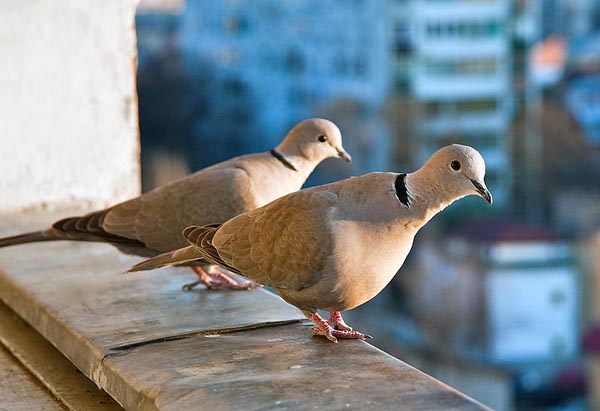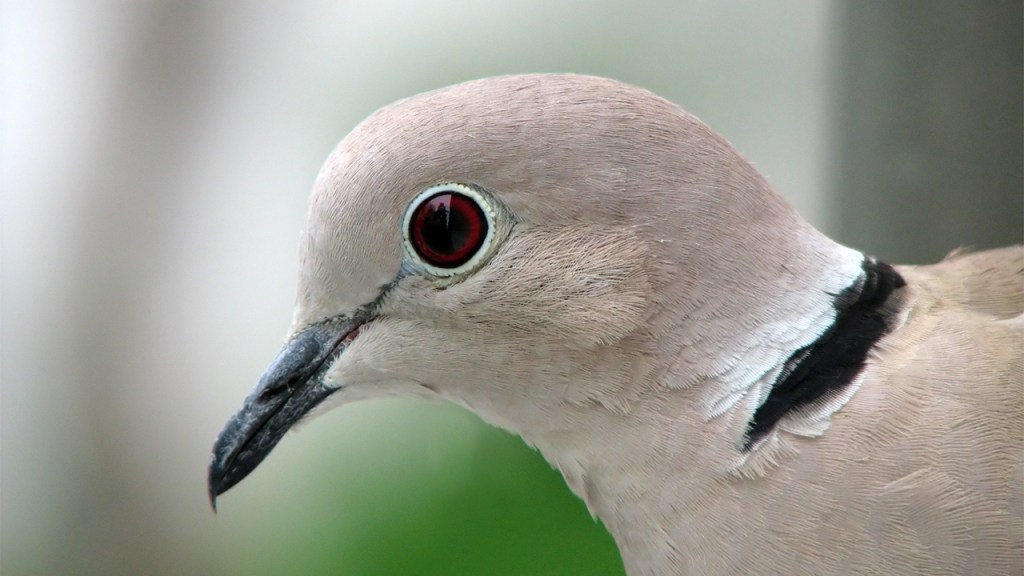The Great Backyard Bird Count (GBBC) — one of the largest citizen science initiatives in the world – annually documents a wide variety of bird population trends.
To my mind, one of the most interesting has been the dramatic spread of the non-native Eurasian collared dove across North America.
The GBBC asks citizen birders to watch an area for at least twenty minutes sometime during a four-day period in mid-February (this year’s count concluded yesterday), and record the birds they see.
Just ten years ago, seeing a Eurasian collared dove would have been a novelty. No more: the doves are now commonly reported by birders in most of the United States.
GBBC data tell the story of this rapid spread.
In the 1970s, the Eurasian collared dove was introduced to the Bahamas. By the early 1980s, the non-native birds made their way to South Florida, where they established populations. Then they began spreading north and west.
Their range appears to have expanded slowly at first. A look at GBBC reports from 1998 show a lot of sightings in Florida, with some birds reported in Texas, Alabama and Arkansas.
By 2001, the doves reached California.
Last year’s bird count results showed the Eurasian collared dove had colonized much of the country. It has not (yet) been reported in New England, but it has reached as far north as Alaska.
The GBBC’s video map dramatically illustrates this expansion.
In my state of Idaho, the doves were first recorded in 2005 by two backyard birders. In subsequent years, the bird was commonly reported in Idaho’s eastern corners. Last year, 132 GBBC participants reported 719 doves throughout the state.
I saw my first Eurasian collared dove in our backyard in 2008 – a banded bird that may have been an escaped pet. Last year, I began seeing the doves hanging around our neighborhood. This year was the first that I noted the species during my own participation in the Great Backyard Bird Count.
What’s going on here? Should conservationists be concerned about this spread?
Unlike some dove species, Eurasian collared doves aren’t migratory. However, they do readily expand into new suitable habitat. In fact, in their native Asia, Eurasian collared doves have been rapidly expanding their range as well – colonizing new countries every year.
The dove is one of those species that adapts well to humanity. The trees, power lines and bird feeders of suburbia provide perfect habitat. The Eurasian collared dove is almost always seen near homes and farms, not unbroken forest or prairie.
Research indicates it is not adversely affecting native mourning doves or other birds. It may simply be filling a new habitat niche created by suburban habitat. But it is still early in the spread.
Could Eurasian collared doves become an invasive threat? That remains to be seen.
Citizen science projects like the GBBC and another citizen initiative, Project FeederWatch, will help scientists continue to track the spread and impacts of the species. It will be interesting to learn what this year’s count found about Eurasian collared doves. If past years are any indication, their populations will likely have grown and spread into new areas of the country.
Have you seen Eurasian collared doves in your area? Have you noted other trends during your backyard bird counts? Let us know what you’re seeing!





I’m in Eugene, Oregon, and first noticed 2 Eurasian Collared Doves last summer. There are now two pairs of them here all of the time (there are a lot of mature trees present), along with a great assortment of other birds. I’ve put out a wide variety of seeds at many different types of feeders for several decades. There’s a large number of resident Crows which have been based here for many years, and it’s interesting to see the Collared Doves being very assertive with the Crows to get the best feeding positions. My “no mess” mix of chopped peanuts, chopped and shelled sunflower seeds, and organic cracked corn is a favorite of the Collared Doves (and the Crows), along with the abundant millet feeders close by.
We have these birds along the Tuolumne River in Waterford and in our backyard as we live along the river trail. Some residents here mistaken them for pigeons.
I live in Chase British Columbia, Canada and we have Eurasian Collared Doves year round. Chase BC is 300 miles northwest of Vancouver Canada.
They are here in Mt.Vernon, Washington. I have 5.
I seen a pair of these ,Eurasion collard doves, while I was visiting my mother in West Tennessee, Milan.
These are just beautiful birds and so much bigger than the gray doves we have here. I was so excited to see these!
I live in
chico,ca and have bird feeders in my back yard. First it was mourning doves and then these larger and more aggressive doves showed up. I now have 4 coming in quite often. They are larger and look almost like pigeons
Yes surprised when I first heard and then saw one in my neighborhood…..Now I commonly hear and see them all over my neighborhood. One took a bath in my Birdbath I my front yard.
In Santa Barbara County, California, mourning doves were once common in the suburbs, but have been replaced there by ECD’s. (My personal observation.)
We have Collared Doves now on Vancouver Island. There’s a pair that have taken up resident in the Gordon Head area of Victoria, and come to my back patio to peck the seed the small birds knock out of the overhead feeder.
I have several of the Eurasian Collared Doves. I just moved to Casa Grande AZ. I have 3 types of doves in my garden. I thought the Eurasian Dove was a white dove and then I realized I had White Dove, Eurasian Collared doves, and Mourning doves. The Eurasian are quite a bit larger than the others.
I have several sets of Quail, finches, and I think Grambels. I have 1 sporadic Road Runner, and some large bird, the size of a laying hen. The hummingbirds coming flitting through in the evening. I have planted native plants from seed and 22 trees to become homes for the birds.
Hello, I’ve just finished reading the page on the Eurasian collared doves. We live in Metchosin, outside of Victoria, B.C. I too, have a pair around the yard for the past few weeks. This is the first time they have appeared (June 2016). They do like to visit the bird feeder which contains oiled sunflower seeds. I have seen one visit the bird bath very briefly for a sip of water. The color in their wings is quite” showy”when they fly, as they broadly display white and tan two tone feathers. They like to be in the trees, perhaps the arbutus and zoom around the acreage. I never see them sitting on a fence post as so many of the other birds do. They seem to get along well with the other birds that are sharing the feeder and are quite large compared to many. Their cooing is very distinct of doves. I now have a few photos. Hope this adds to your info….
We have two eurasian doves who call in our garden a least three times a day we live in Liverpool United Kingdom I enjoy there visits very much however the magpies get a bit fed up of them and usually give chase
Hi I live in Baja California Sur near Cabo Sam Lucas and I spotted
a collared pair here in DEC 2015
please do not post my email address
Hi , I have a dove white with a black collar and light blue belly and the end of the tale, coming to my balcony. I set up food and water for this beautiful bird. It has rings with some info on both legs, but I don’t want to grab it yet and stress the bird.
This is Calgary , Alberta, Canada.
Any advice , please ?
At first it didn’t register. Then I realised, these are not Mourning Doves! I live on Winkle Avenue, outside of Santa Cruz, California, on the edge of Rodeo Gulch, a largely intact swath of Coast Live Oak, and California Bay Laurel with an understory of Poison Oak and native blackberry. And as of this year the Eurasion Collared Dove lives here too. It’s far less shy of people than the native Band Tailed Pigeon.